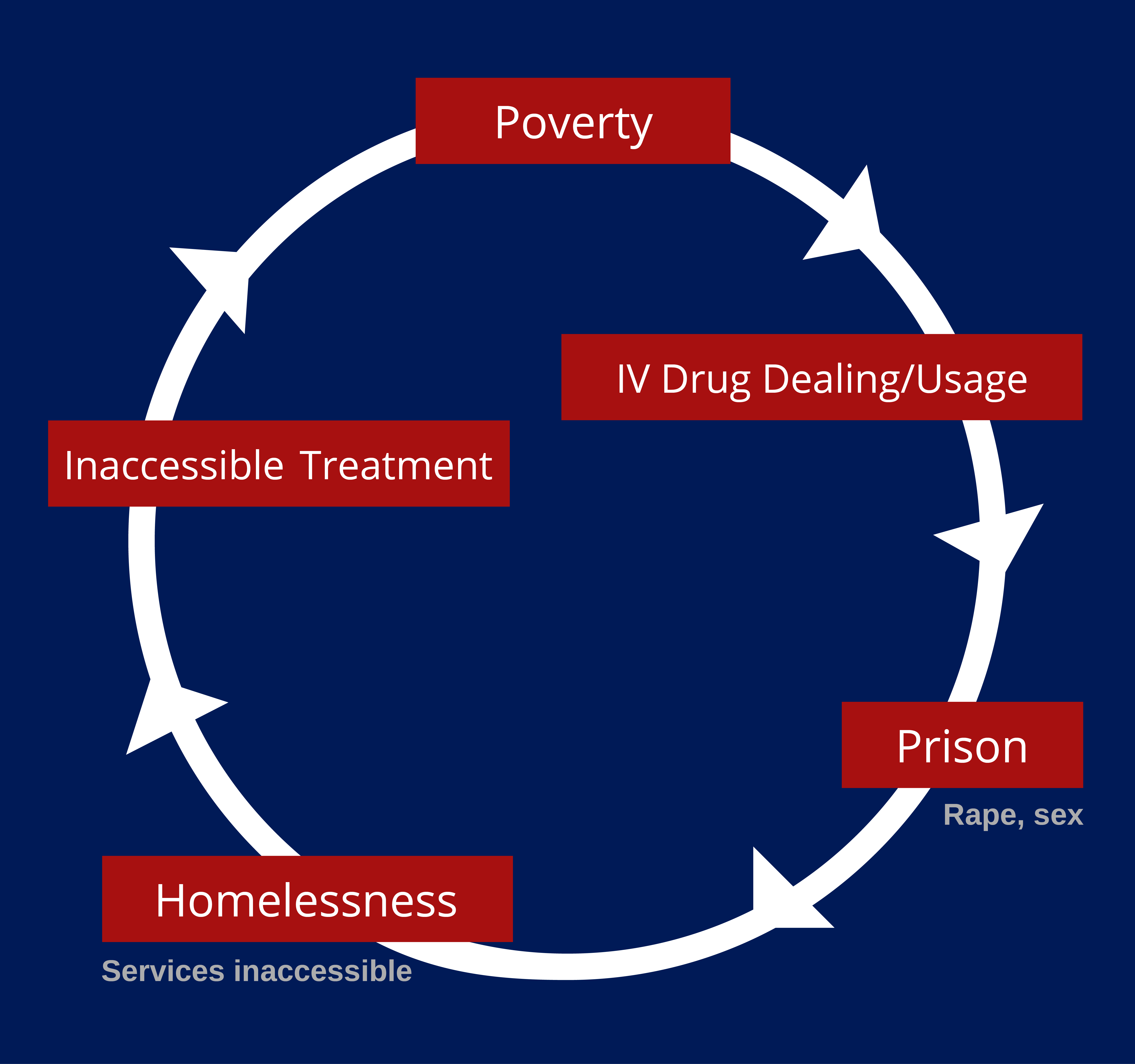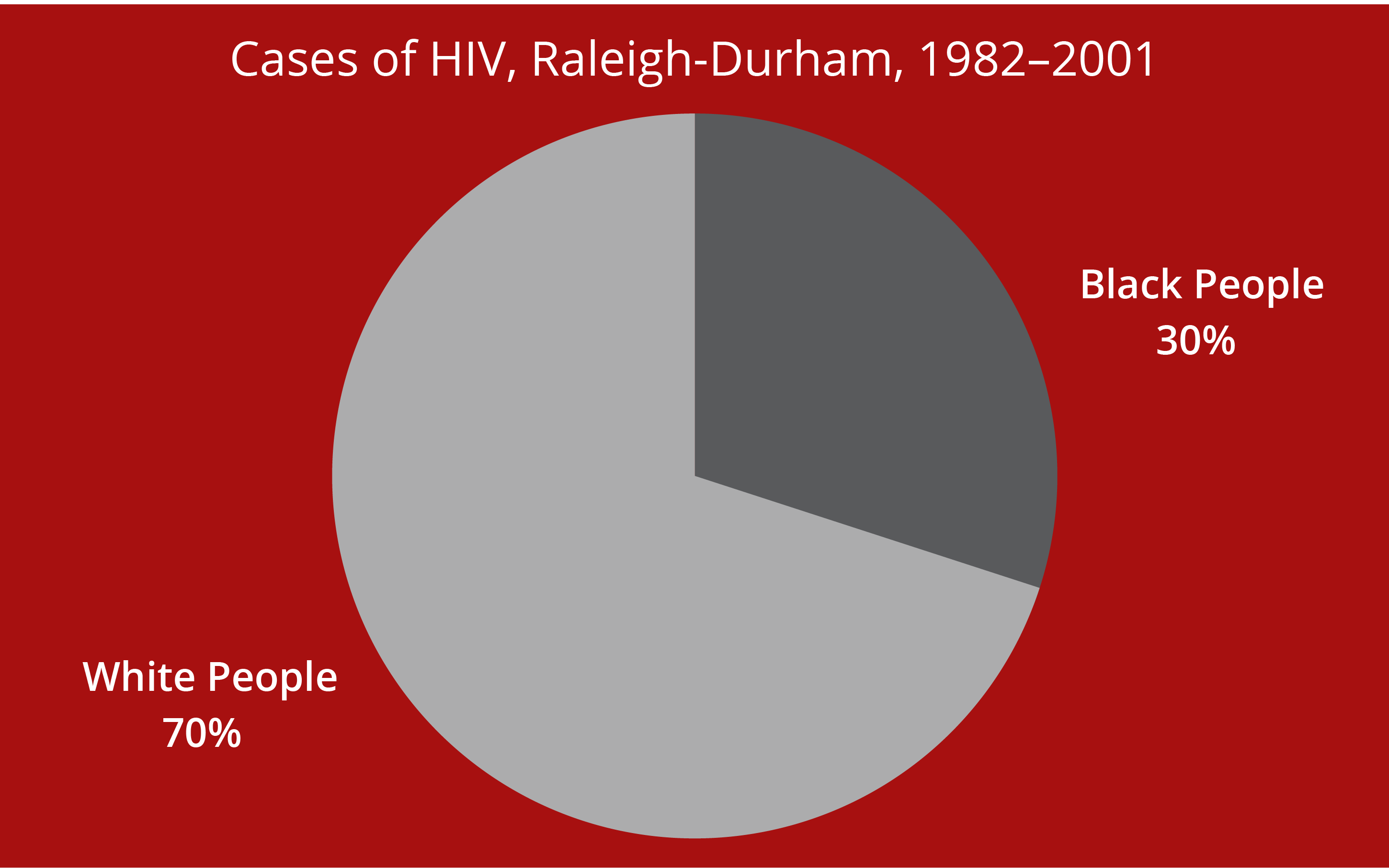Over twenty years after the dismantling of desegregation, Black Durhamites continued to face higher rates of poverty and housing inequities than did whites. Poverty forced some into prostitution and drug dealing.
Ongoing racial bias, the rise of intravenous drug use, and mass incarceration caused Durham’s prison population to increase from 3,496 to 10,122 between the years 1983 and 1995. Prisons prohibited condoms, even though rape and sex were common. Thus, many people left prison HIV-positive. Lacking services, some infected their partners and/or ended up homeless.
Each structural barrier Black Durhamites faced compounded the others, reinforcing the cycle of poverty and increasing the spread of HIV.



